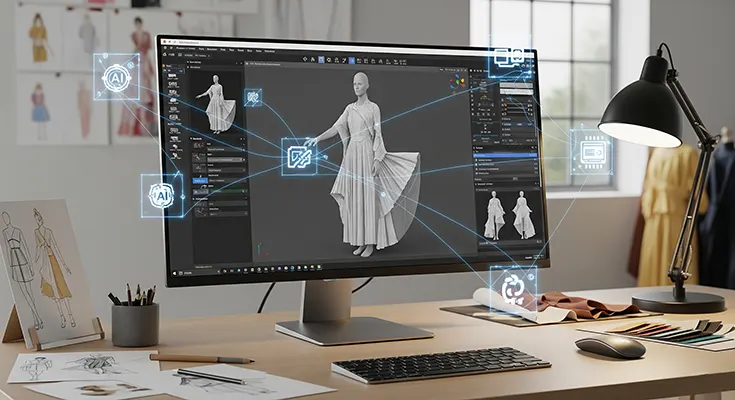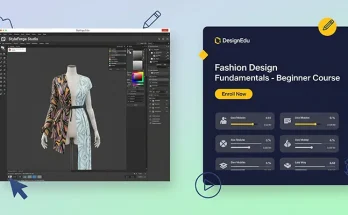The fashion industry is undergoing a technological renaissance, and one of the most transformative innovations driving this change is AI-powered virtual fashion design software for 3D modeling. By combining artificial intelligence (AI) with advanced 3D modeling techniques, designers and brands are revolutionizing how clothing is conceptualized, created, and showcased.
What Is AI-Powered Virtual Fashion Design Software?
AI-powered virtual fashion design software leverages machine learning algorithms, computer vision, and 3D graphics to create realistic and highly customizable digital garments. This software allows designers to visualize and manipulate clothing designs on digital mannequins or avatars in a three-dimensional space. Unlike traditional flat sketches or 2D blueprints, 3D modeling provides an immersive, dynamic representation of fabrics, textures, and movement.
Benefits of AI in 3D Fashion Design
- Enhanced Creativity and Efficiency
AI algorithms can suggest design modifications, color palettes, and fabric choices based on current trends and historical data. This empowers designers to experiment more freely and accelerate the creative process without wasting physical materials. - Realistic Visualization
With advanced physics engines and AI-driven simulations, virtual fabrics can accurately mimic draping, stretching, and folding. Designers get a true-to-life preview of how garments will behave and fit in different conditions, reducing the need for costly physical prototypes. - Personalization and Customization
AI enables the creation of highly personalized fashion experiences. Virtual fashion design software can adjust designs to specific body measurements or style preferences instantly, offering bespoke fashion solutions at scale. - Sustainability
By minimizing the reliance on physical samples and reducing wasteful iterations, AI-powered 3D design supports eco-friendly practices. Brands can adopt “digital first” approaches to minimize environmental impact.
Use Cases in the Fashion Industry
- Design and Prototyping: Designers use AI-powered 3D tools to visualize collections before physical production, saving time and resources.
- Virtual Fashion Shows: Brands host immersive virtual runway shows featuring 3D models, reaching a global audience without logistical constraints.
- E-Commerce and Virtual Try-On: Shoppers can try on virtual garments using their avatars, powered by AI and 3D technology, enhancing the online shopping experience and reducing return rates.
Leading Technologies and Platforms
Several software platforms are driving innovation in this field, integrating AI and 3D modeling capabilities tailored for fashion designers. These include CLO 3D, Browzwear, and Style3D, among others. They often come equipped with AI modules that can analyze design data, automate repetitive tasks, and predict consumer preferences.
Future Outlook
As AI and 3D modeling technologies continue to evolve, the future of virtual fashion design looks promising. Enhanced AI will enable even more intuitive design assistance, augmented reality (AR) integration, and seamless collaboration across global design teams. Ultimately, AI-powered virtual fashion design software for 3D modeling is set to become an indispensable tool in the fashion industry, paving the way for creativity, sustainability, and innovation.
AI-powered virtual fashion design software for 3D modeling transforms how garments are designed, developed, and presented. This dynamic intersection of AI and fashion not only streamlines the creative process but also fosters sustainability and deeper customer engagement, shaping the future of the fashion industry.





